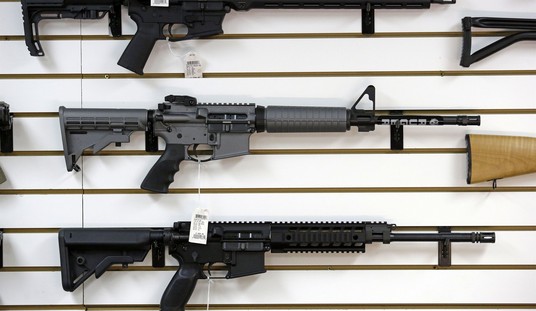It turns out that the Department of Homeland Security isn’t buying that much ammunition per officer after all… and certainly a lot less per man than most avid shooters go through in a year.
Of course, I won’t ask you to take my word for it (the mind control rays could have gotten me, too), so I’ll turn it over to the National Shooting Sports Foundation, which provides a link to the Government Accountability Office report for the debunking (PDF) (here’s the direct GAO link).
The Department of Homeland Security’s (DHS) annual ammunition purchases have declined since fiscal year 2009 and are comparable in number to the Department of Justice’s (DOJ) ammunition purchases. In fiscal year 2013, DHS purchased 84 million rounds of ammunition, which is less than DHS’s ammunition purchases over the past 5 fiscal years, as shown in the figure below. DHS component officials said the decline in ammunition purchases in fiscal year 2013 was primarily a result of budget constraints, which meant reducing the number of training classes, and drawing on their ammunition inventories. From fiscal years 2008 through 2013, DHS purchased an average of 109 million rounds of ammunition for training, qualification, and operational needs, according to DHS data. DHS’s ammunition purchases over the 6-year period equates to an average of 1,200 rounds purchased per firearm-carrying agent or officer per year. Over the past 3 fiscal years (2011-2013), DHS purchased an average of 1,000 rounds per firearm-carrying agent or officer and selected DOJ components purchased 1,300 rounds per firearm-carrying agent or officer.
DHS ammunition purchases are driven primarily by firearm training and qualification requirements. Most DHS firearm-carrying personnel are required to qualify four times per year, though requirements vary by component, as do the number of rounds of ammunition typically used for training and qualification. DHS components also reported considering other factors when making ammunition purchase decisions, such as changes in firearms, usage rates, and ammunition inventories. DHS components maintain inventories of ammunition to help ensure they have sufficient ammunition for the training and operational needs of their officers, as there can be months-long delays between placing an order for ammunition and receiving it. As of October 2013, DHS estimates it had approximately 159 million rounds in inventory, enough to last about 22 months to meet the training and operational needs of its firearm-carrying personnel. Ammunition inventory data provided by DOJ components indicated that inventory ranged from about 13 months’ worth to about 20 months’ worth.
Put bluntly, unless the GAO is under the threat of having their families interred in FEMA camps, most of what you’re hearing from InfoWars and similarly credible sites is junk.
So who is buying all the ammunition? The NRA answers that question, as cited by Rich Smith of The Motley Fool.
Credit is due to the National Rifle Association for debunking conspiracy theories about “the government” causing this crisis. Last month’s issue of American Rifleman, the “official journal of the NRA,” lays out the case for why American gun owners have only themselves to blame for the steep rise in ammunition prices (and the steep fall in ammunition supply).
From 2000 to 2012, the NRA reported, excise taxes received by the federal government on ammunition sales (a proxy for ammo sales per se) roughly tripled in size. The dollar value of actual ammunition sales increased nearly 100% from 2007 to 2012. In real life, the NRA explained this means that ammunition sales “started to climb fast as gun sales began surging” in the run-up to the 2008 presidential election.
High prices, low supply
Conspiracy theorists will dispute this simple explanation, no doubt. But it jibes with what manufacturers of ammunition are saying. ATK subsidiary Federal Cartridge, for example, has a statement on its website advising, “We are currently experiencing high demand for our products.” In an interview with American Rifleman, Federal confirmed, too, that “the current increase in demand,” (and by implication, the increase in prices) “is attributed to the civilian market” (this means you).Olin’s Winchester Ammunition said on its website it is also “experiencing an extremely high demand.” And privately held Freedom Group, which manufactures Remington cartridges, said “it’s clear to us that any lack of supply in the marketplace has been from consumer demand.”
Put simply, it’s the hoarders and speculators, not DHS, that is drying up ammunition supplies. Until the speculation/hoarding cycle subsides, it might be a long time until we stabilize at our “new normal” ammunition consumption level as a nation of shooters.









Join the conversation as a VIP Member